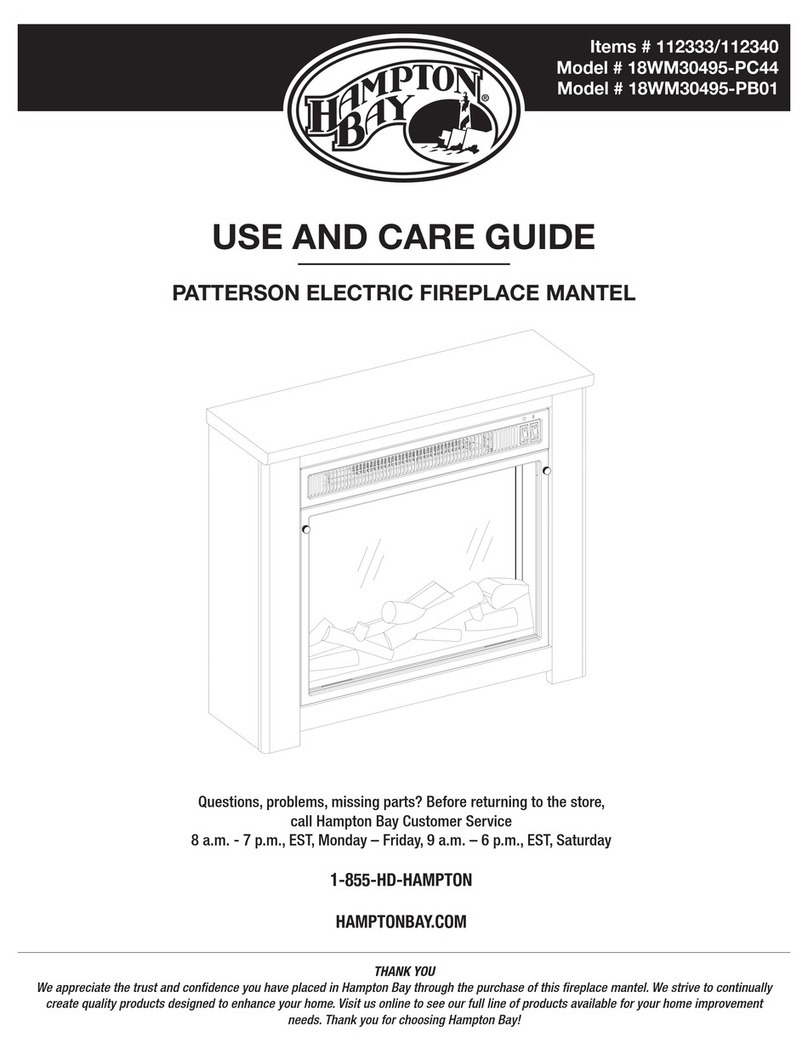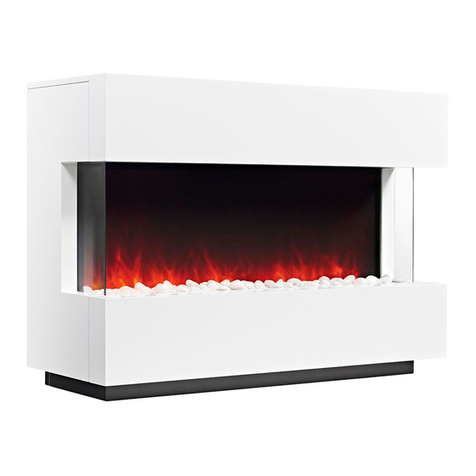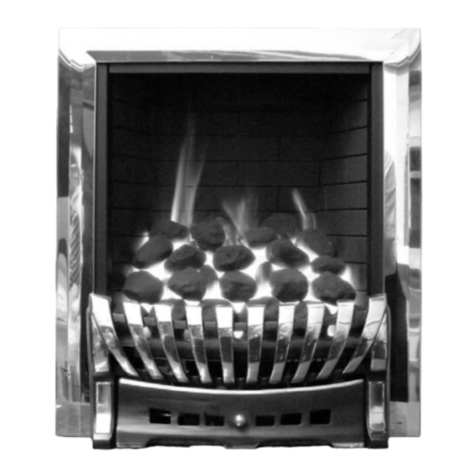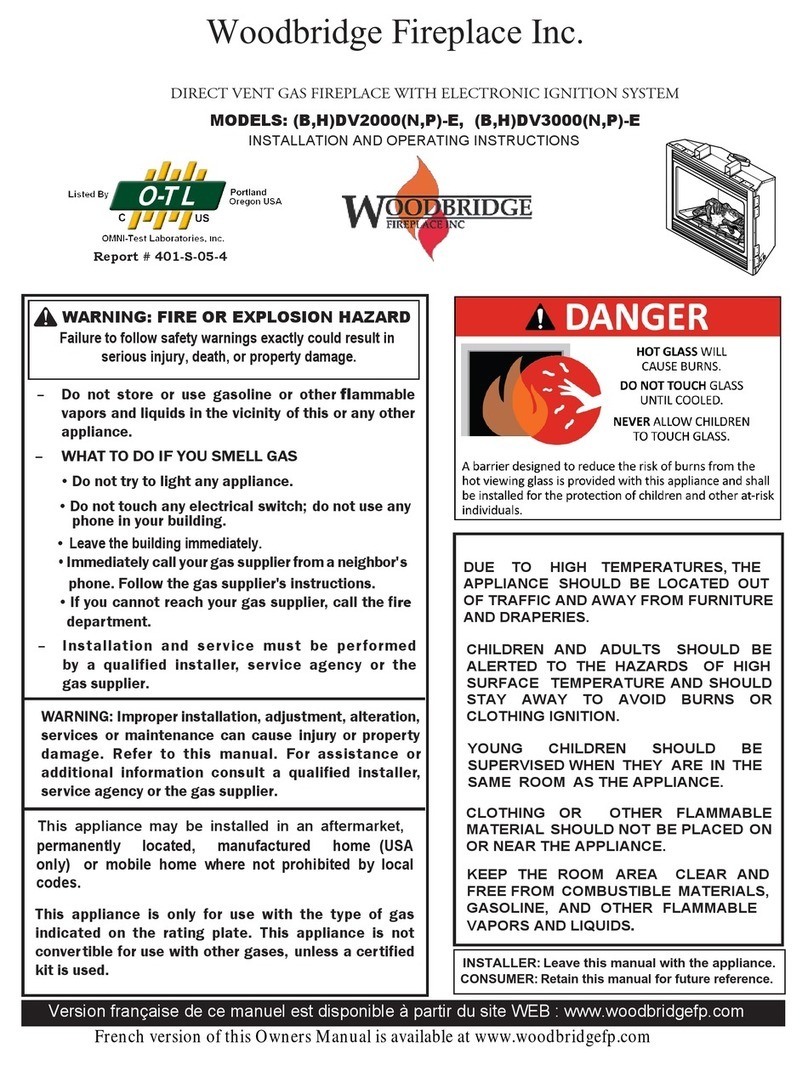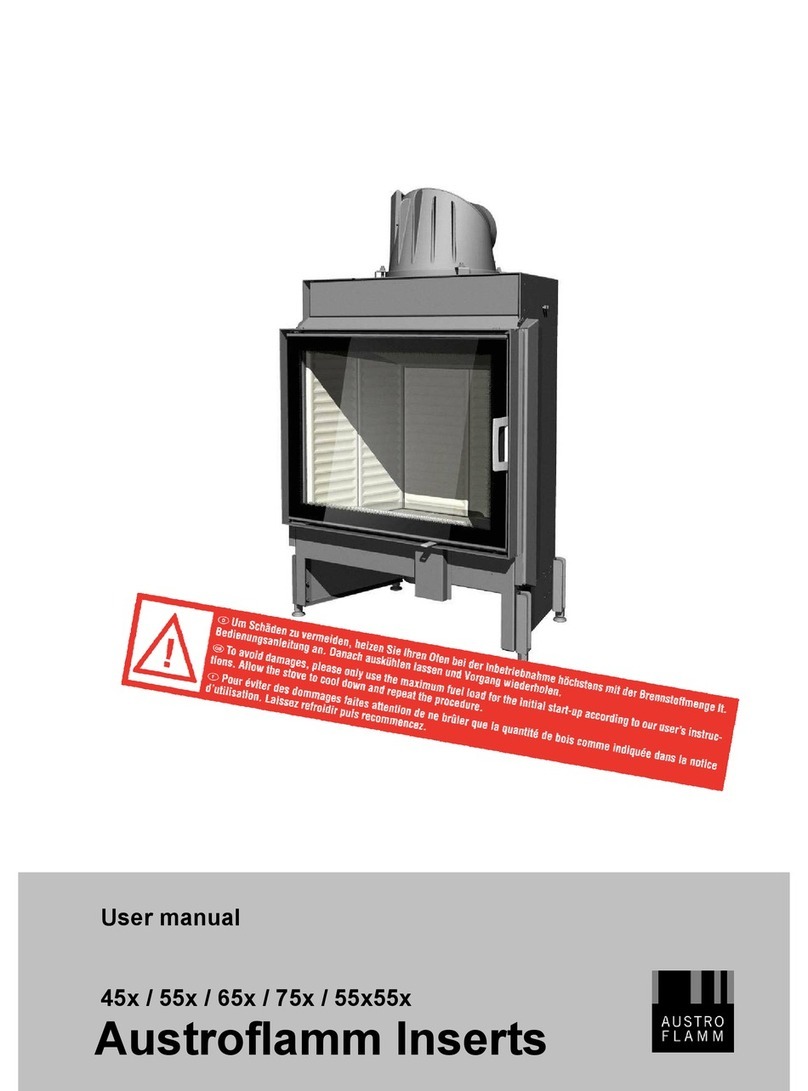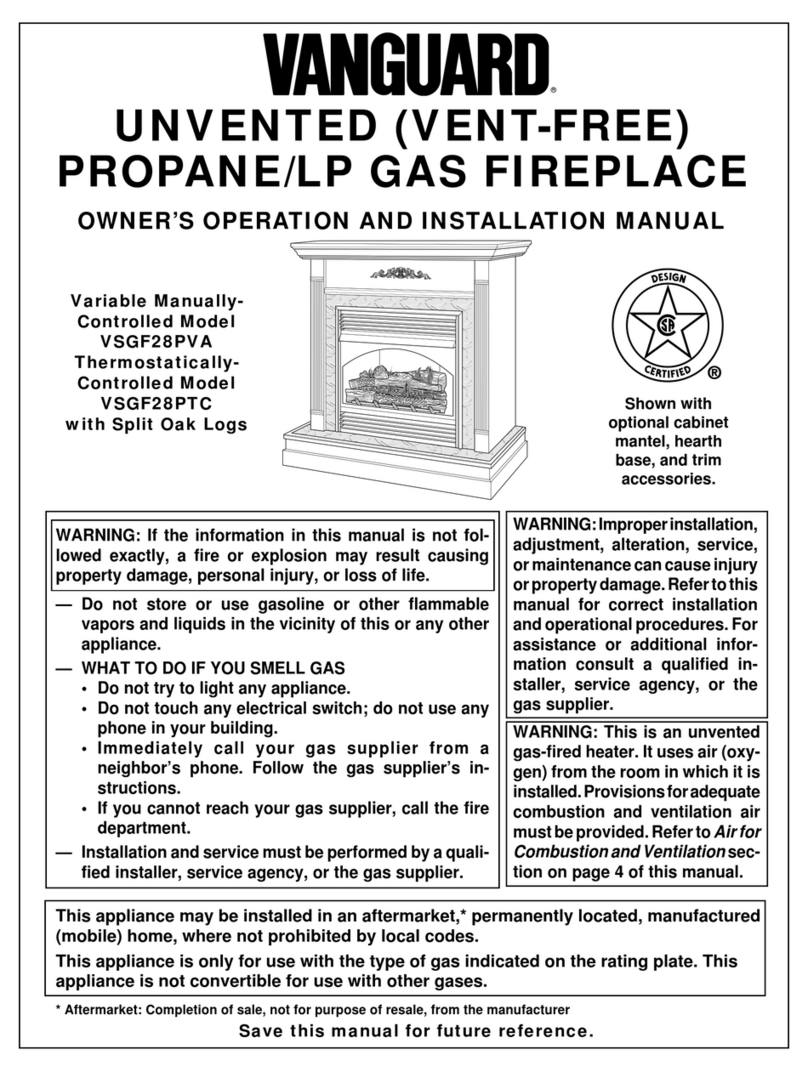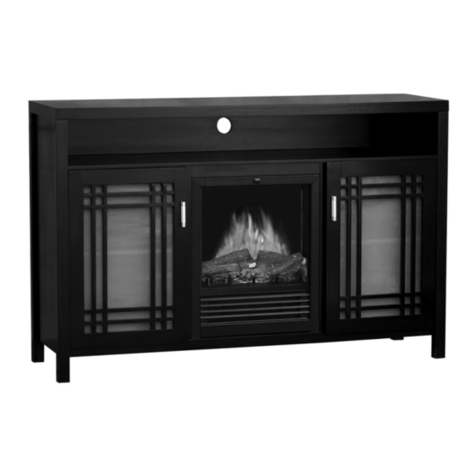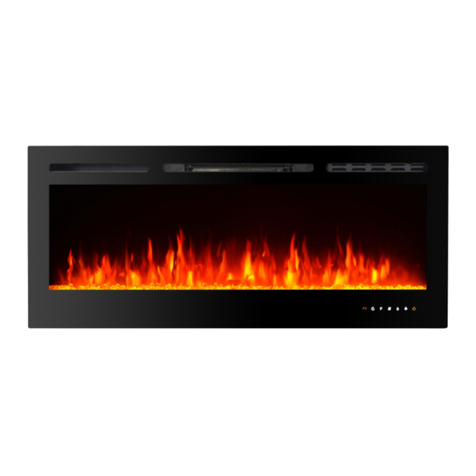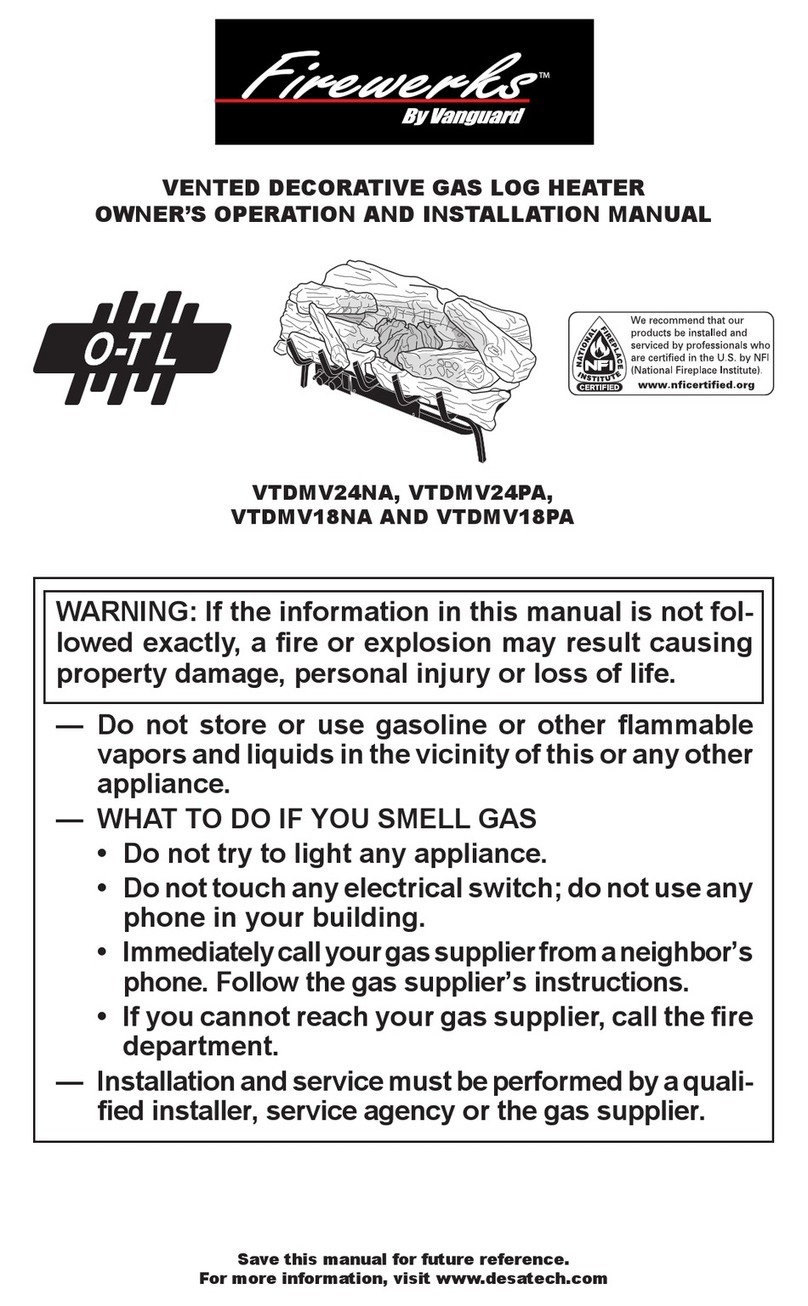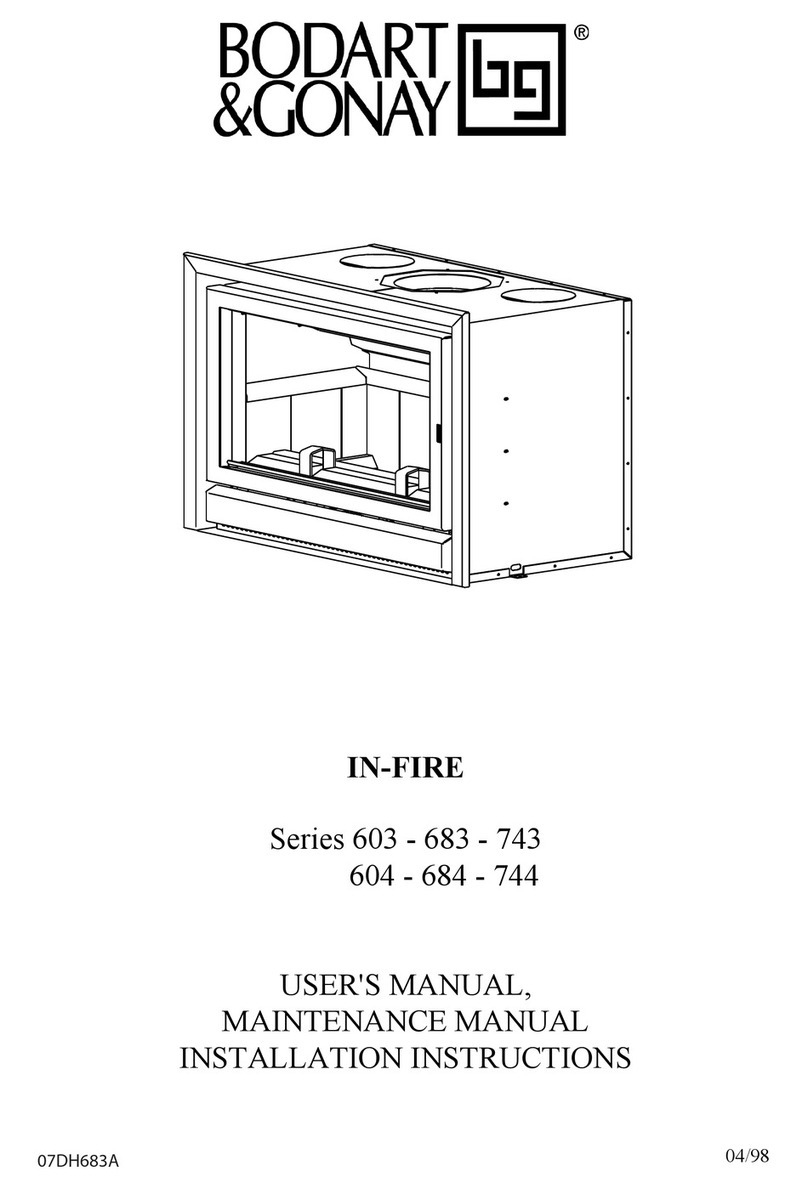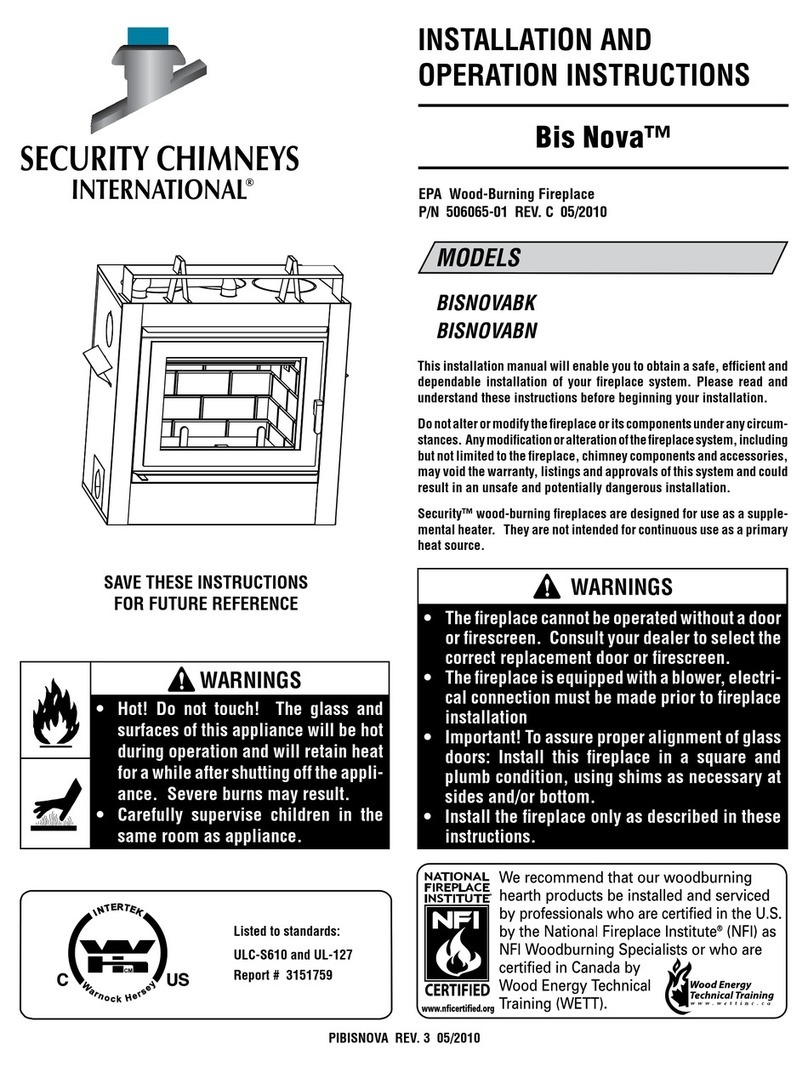
NOTE: DIAGRAMS & ILLUSTRATIONS ARE NOT TO SCALE. 5
Figure 1 - Outside air Register
D. Wet wood
Wetor tarredwoodwillsmoulderandsmoke
instead of burning properly. Your dealer can
help you determine if you have properly
seasoned wood for burning.
E. Dirty or blocked chimney
Check to make sure the chimney is clear and
clean. If dirty call a certified chimney sweep
or use a properly sized chimney brush to
clean.
F. Chimney not long enough
The minimum chimney height is twelve (12)
feet(3.7m)notincludingthefireplaceheight.
The chimney must extend at least three (3)
feet (915 mm) above its point of contact
with the roof and at least two (2) feet (610
mm) higher than any roof or wall within ten
(10) feet (3 m) of it. When installed with
one offset, the minimum chimney height
is fifteen (15) feet. Additional height will
increase draftandwilldecreasethe tendency
to smoke.
G. Poor chimney draft
With no fire, there should be sufficient draft
to exhaust cigarette smoke introduced under
the chimney. Chimneys installed against an
outside wall without protection may generate
back draft problems which will cause start-up
problems. To prevent this, open a nearby
window, roll up a piece of paper and light it.
Then, hold it in the upper part of the firebox
to warm up the chimney. Wait until the draft
is sufficient, then start the fire.
IMPORTANT CAUTIONS
A. Donotblockthehotairvents tothefireplace
as this will cause the fireplace to overheat.
B. Never use gasoline, gasoline-type lantern
fuel, kerosene, charcoal lighter fluid, or
similar liquids to start or ‘freshen up’ a fire
in this fireplace. Keep all such liquids well
away from the fireplace while it is in use.
C. Do not burn coal. The sulphur in coal will
corrode the firebox and chimney.
D. Keep combustible materials at least 48”
(1.2 m) away from the front of the fireplace
opening.
E. Never leave children unattended when
there is a fire burning in the fireplace.
F. Do not use the HE43-2 as an incinerator
to burn paper, cardboard or construction
material such as pressed wood, plywood
or lumber. Use only untreated wood. Wood
protectors, metallic paper, coal, plastic,
waste, beach wood, Christmas tree, sul-
phur and/or oil will damage the fireplace.
G. Donotburndriftwood whichhasbeenin the
ocean or salt water. The salt will corrode
the firebox and chimney.
H. Do not burn wood in the area in front of
the log retainer.
I. Do not allow the wood to smoulder or burn
without flame, since this will produce
excessive creosote in the unit as well as
increased particulate emissions.
Push to open
Push to open
HOWTOUSETHEOUTSIDEAIRREGISTER
(FIREPLACE)
The outside air register is located on the up-
per left part of the top louver. The outside air
register supplies oxygen to the fire and allows
control of the fire when the doors are closed.
The fresh air must come from outside the house
(the air intake must not draw air from inside the
house). This will minimize negative pressure in
the house. The more you slide the register to
the left, the more fresh air into the firebox and
the more accelerated combustion you will get
(see Figure 1). When starting a fire, the register
should always be fully opened.
Forinformationonwhenyoushouldstartclosing
the register, see "Refueling" section.
REFUELING
The HE43-2 fireplace will operate best if at-
tention is given to operating the unit with the
outside air register fully opened (see Figure
1)after refueling in order to bring the firebox
and the chimney system up to their optimum
operating temperature. Combustion efficiency
is relative to firebox temperature. To obtain this
temperature, the fireplace must be operated
with the primary air fully opened during 10 to
20 minutes after reloading, depending on the
heat and on the moisture content of the wood.
Onceyouhavereached the desiredtemperature,
the outside air register control can be set to a
medium setting. The benefit of this technique
will be cleaner glass, less creosoting, greater
efficiency and the most pleasing fire for your
enjoyment.
Settheairregistertothefullopenpositionbefore
opening the doors to reduce the possibility of
smoke entering the home from the fireplace.
CLOSING THE DOORS
As soon as a layer of embers covers the surface
under the log retainer, it is possible to close
the doors with the outside air register opened.
Closing the doors prematurely may result in:
• Thereboxllingwithsmoke;
• Theameintensitycutsdownexcessively.
Meaning the fireplace is not hot enough to
close the doors.
SMOKING –
CAUSES AND TROUBLESHOOTING
To reduce the likelihood of smoking when
opening the door, set the outside air register to
the left before opening the door. Your fireplace
has been designed and tested to provide smoke
free operation. Occasionally, there may be a
small amount of smoking upon lighting the fire,
until the chimney heats up but this should not
continue. If the fireplace continues to smoke
it is probably for one of the following reasons:
A. The doors are partially opened
When you open the doors, open them
completely.
B. Negative pressure in the house
As the fire burns, air goes up the chimney.
This air must be replaced through leakage
into the house or through the outside air
duct. When operating the HE43-2 fireplace,
open a nearby window temporarily to check
if there is adequate replacement air supply.
C. Fans operating (e.g.: range hood)
Fans such as range hoods or bath fans draw
air out of the house and may actually cause
a negative pressure in the house. Turn off all
fansandopena nearbywindowtodetermine
if this is the cause of the problem.






















